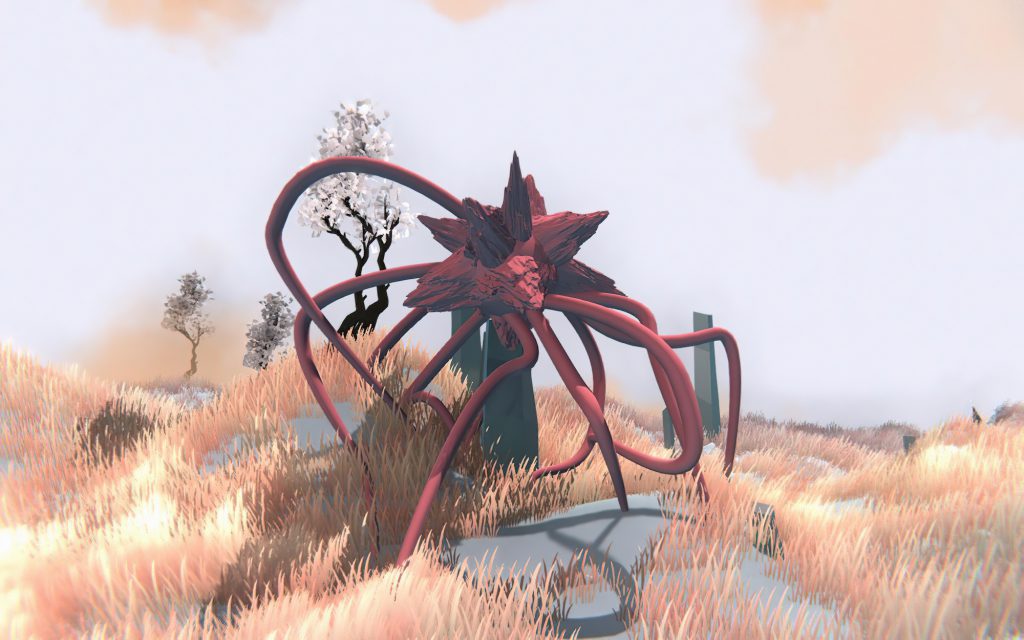
Sahej Rahal, Bashinda, 2020, AI simulation, courtesy of the artist and Chatterjee & Lal, Mumbai
Sahej Rahal, Bashinda, 2020, AI simulation, courtesy of the artist and Chatterjee & Lal, Mumbai

Dusting off Robert Enthoven’s 1924 colonial account The Folklore of Bombay, Sahej Rahal formulates a sharp commentary on the global health crisis created by the coronavirus pandemic. He cites the Mahamari Devi, the cholera mother worshipped by lower castes, as one of the many instances in which propaganda falsely associated an outbreak of disease with people at the bottom of caste hierarchies or in religious minorities. For Rahal, mythology and speculative fiction, just as much as lived and historical reality, are territories to reflect on issues of social justice. In much of his work, spaces of political solidarity and resistance are central to his engagement with mythmaking, which informs a critique of the mythoi fabricated by India’s current far-right nationalist regime.
The junction of natural history, folklore, and metaphysics is the ground on which Rahal realized the Missing Pages series (2018–ongoing). Presented at the Yangnim Mountain, this ongoing collection of paintings is informed by encyclopedic representations of imaginary beasts and characters in the format of a‘jā’ib al-makhlūqāt literature, a genre of classical Islamic illustrated manuscripts. Djinnis, drummers, and celestial birds are just some of the characters in the cosmological fiction that Rahal has assembled to look at citizenship vis-à-vis the appropriation of religious symbols that proliferate along casteist, patriarchal, and nationalist ideologies in contemporary India.
Similarly, Rahal’s digital simulation Bashinda (2020) disputes cosmological views that liken society to the body of a patriarchal figure called Manu, a cosmic man that lies at the center of the universe, to counter a metaphysical premise of caste hierarchy. The traditional metaphorical association of the elites with the head and the laboring lower castes with the feet forms the basis of what Rahal calls the “mythological system of oppression,” which he contests through code and gaming technologies. In this digital biome, the division between the mind and body of society is reflected in the somatic functions of the bizarre creatures that endlessly stroll across the screen. The movement of their limbs is determined by independent scripts that operate, according to Rahal, as a “consortium of ungoverned organs” each endowed with a mind and a will of its own.
Sahej Rahal, Bashinda, 2020, AI simulation, courtesy of the artist and Chatterjee & Lal, Mumbai